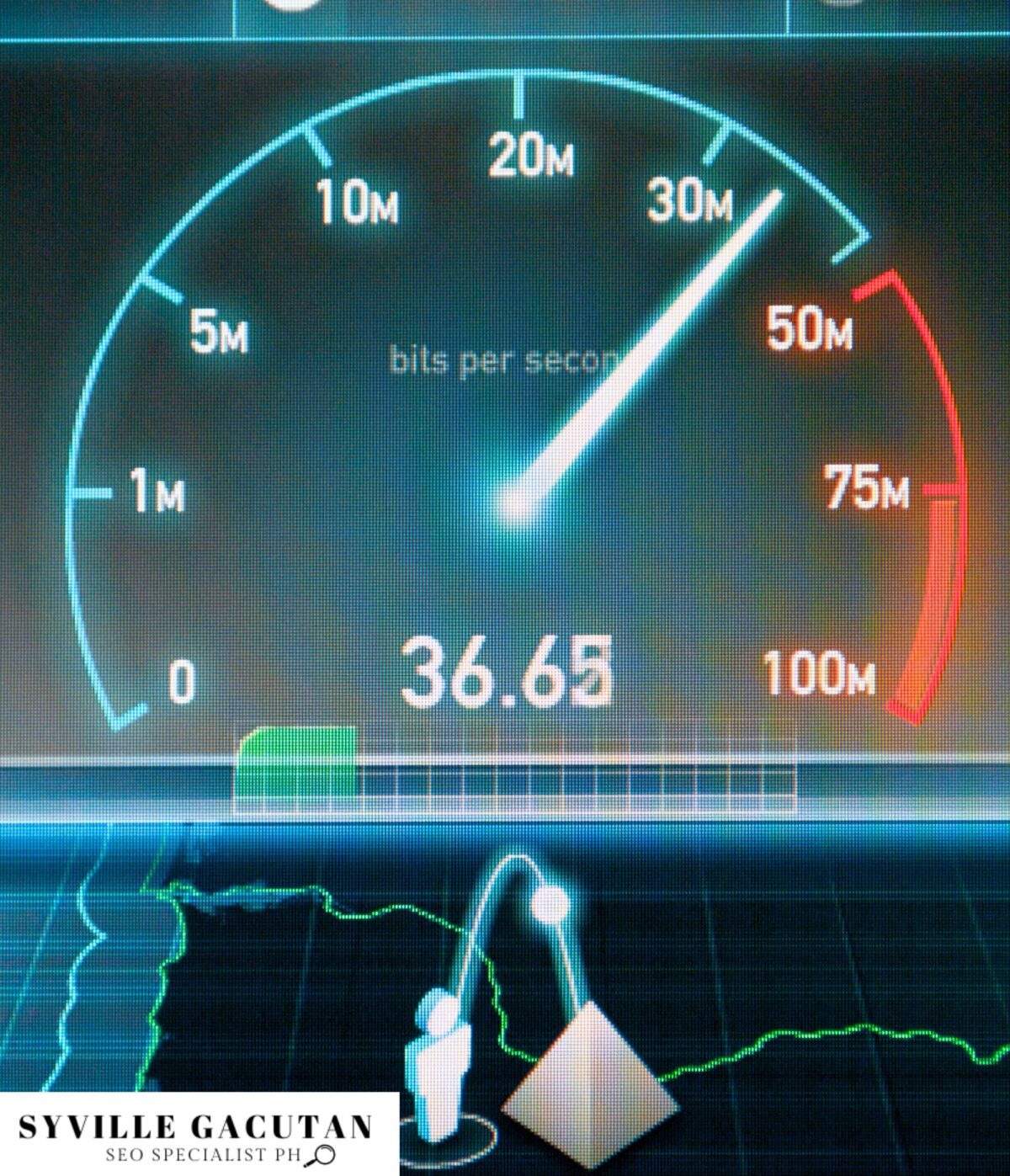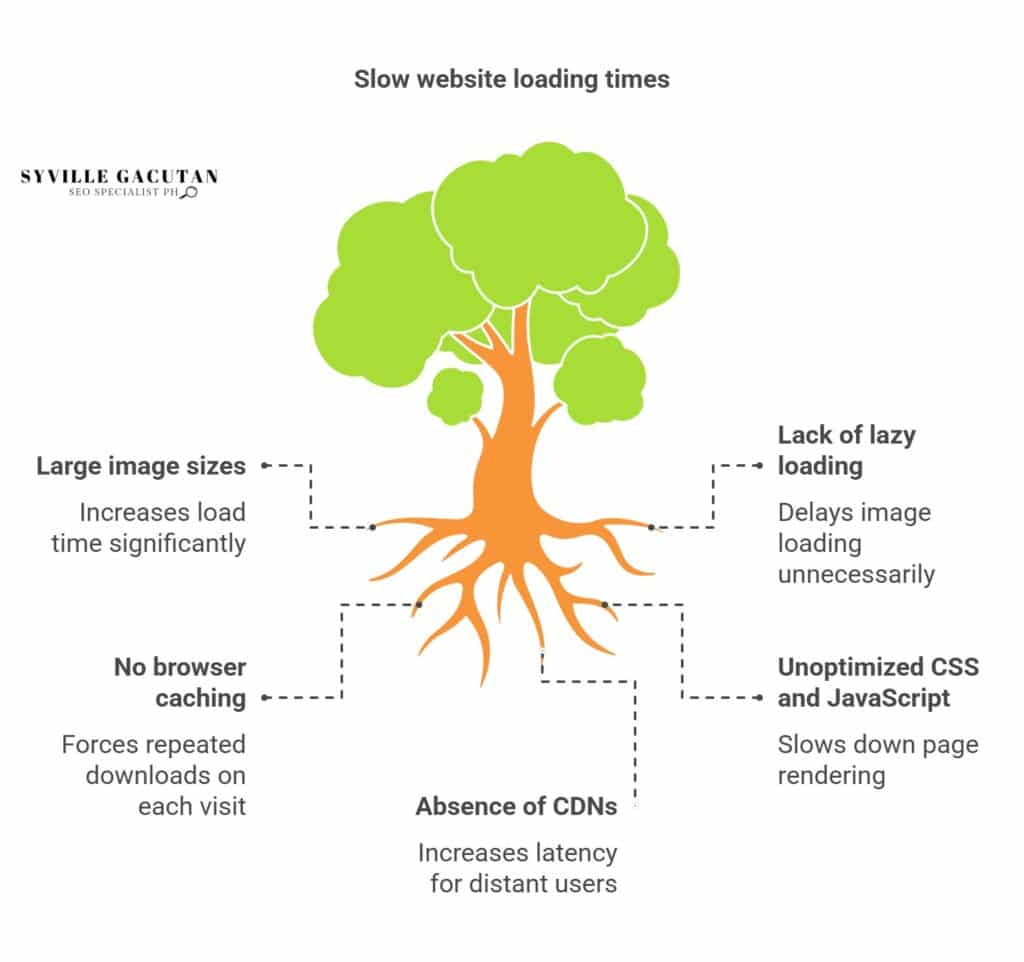
Improving your site’s SEO starts with making it faster, which is key for both user engagement and better search rankings. Begin by compressing images and using formats like WebP and AVIF to keep file sizes small without sacrificing quality. Set up browser caching with proper expiration times and headers to cut down on server requests. Also, minify your CSS and JavaScript to make your site load quicker. These steps not only create a smoother experience for users across all devices but also help boost your site’s trustworthiness and keep visitors coming back. Explore further strategies to fully capitalize on SEO benefits, improving site speed for SEO ranking.
Key Takeaways
- Optimize image sizes: Compress images and switch to formats like WebP to keep your site fast without losing image quality.
- Implement lazy loading: Only load images when they’re about to appear on the screen, which helps speed up the initial load time.
- Leverage browser caching: Let browsers save some files so they don’t have to download everything again on future visits, making your site load faster.
- Minify CSS and JavaScript: Clean up and reduce the size of your code so pages load quicker and your server responds faster.
- Use CDNs: Deliver content from servers closer to your users, helping your site load faster no matter where visitors are located.

Understanding Site Speed Importance
Understanding how important site speed is in today’s digital world is key for any business looking to improve its online presence. Speed affects everything from user experience to SEO rankings and mobile performance. A fast, efficient website isn’t just nice to have—it’s a must.
Speed is the silent yet potent force behind user experience impact. In a world where users demand immediate gratification, a delay of even a second can alter their perception of a brand, leading to a negative user retention correlation. Visitors are more likely to leave pages that take too long to load, causing a ripple effect that can diminish a site’s credibility and, ultimately, its revenue potential.
Moreover, the influence of site speed on SEO rankings cannot be overstated. Search engines, particularly Google, prioritize user satisfaction, and a fast site signals quality content delivery, boosting a site’s position in search results. This SEO rankings influence is a powerful motivator for businesses to optimize their site speed, ensuring they remain competitive in a crowded marketplace.
The significance of mobile responsiveness further underscores the importance of site speed. As mobile devices dominate internet usage, page load effects on smaller screens become a critical consideration. A mobile-responsive site that loads quickly ensures that users appreciate a smooth experience no matter what device they’re using, enhancing engagement and driving conversions.
Measuring Current Speed

To effectively enhance site speed, one must first accurately measure its current performance. Understanding the nuances of site speed involves examining several factors that come together to shape the overall user experience. Utilizing current speed tools is essential in this process, as they provide critical insights into how your site operates across different platforms and devices. The true power lies in leveraging these tools to identify bottlenecks and areas for improvement.
Consider the following strategies:
- Speed Testing Metrics: Employ tools such as Google PageSpeed Insights and GTmetrix to gather comprehensive data on load times, page sizes, and requests. These metrics offer a clear picture of how swiftly your site responds, influencing your site’s ranking potential and user engagement.
- User Experience Impact: Recognize that every second counts when it comes to loading times. Delays can lead to higher bounce rates, impacting conversions and customer satisfaction. Regularly auditing your speed ensures that you maintain an edge over competitors by delivering seamless user experiences.
- Mobile Speed Considerations: With mobile usage surpassing desktop, it’s imperative to optimize for mobile speed. Utilize tools like Google’s Mobile-Friendly Test to evaluate your site’s performance on various devices, ensuring that speed does not compromise mobile user experience.
- Speed Monitoring Strategies: Implement ongoing speed monitoring strategies to maintain optimal performance. Solutions such as Pingdom and New Relic provide real-time alerts and historical data; this allows for proactive maintenance and quick resolution of speed-related issues.
1. Optimizing Image Sizes

Images play a pivotal role in the visual appeal and aesthetic value of a website, yet they can significantly hinder site speed if not optimized properly. To maintain a balance between visual richness and performance excellence, adopting strategic image optimization practices is paramount. Utilizing advanced image compression techniques can drastically reduce file sizes without compromising quality. Tools like Photoshop, TinyPNG, and JPEGmini offer powerful compression capabilities that can enhance your website’s loading speed.
Responsive image formats, such as WebP and AVIF, are designed to deliver superior compression and quality, adapting seamlessly to various screen sizes. These formats empower your site to load faster, catering to the dynamic demands of a diverse audience. Furthermore, implementing lazy loading benefits your site’s performance by deferring the loading of images until they are needed, thus reducing initial load times.
| Technique | Benefits |
| Image Compression | Reduces file size, maintains quality, accelerates load time |
| Responsive Image Formats | Adapts to screens, improves user experience, saves bandwidth |
| Lazy Loading | Loads images on demand, enhances performance, saves resources |
Incorporating Content Delivery Networks (CDNs) ensures that your images are served from the closest server to the user, further enhancing load speeds across geographical locations. This is a critical strategy for websites with a global reach, maximizing efficiency and user satisfaction.
Moreover, optimizing alt text not only contributes to accessibility but also improves SEO by providing search engines with detailed context about the image content. By implementing these robust optimization techniques, you can harness the power of images to captivate your audience while maintaining lightning-fast site performance.
2. Leveraging Browser Caching

While optimized images significantly enhance site speed, another pivotal technique in accelerating website performance is leveraging browser caching. Browser caching allows you to store certain files on a visitor’s device, reducing load times on subsequent visits. By implementing effective caching strategies, you can ensure your website remains competitive and efficient.
- Cache Expiration: Set appropriate cache expiration times for different file types. Static resources like images, CSS, and JavaScript can have long expiration periods, minimizing requests to the server. This not only speeds up page load times but also conserves bandwidth.
- Cache Control: Utilize cache control headers to dictate how and when cached content is refreshed. This provides you with the power to manage web resources effectively, ensuring that users always receive the most relevant content without unnecessary delays.
- Browser Compatibility: Ensure that your caching strategy is compatible with various browsers. Different browsers interpret caching instructions differently. Testing across multiple platforms guarantees that all users benefit from your optimized caching setup.
- Caching Plugins: Employ caching plugins, especially if you’re using content management systems like WordPress. These plugins simplify the implementation of caching rules, automate cache storage management, and enhance site performance without requiring extensive technical know-how.
In a world where milliseconds matter, leveraging browser caching is not merely optional; it is essential. By mastering cache expiration, exercising precise cache control, ensuring browser compatibility, and utilizing powerful caching plugins, you position your website at the forefront of speed and efficiency.
Empower your digital presence by embracing these strategies, and reap the benefits of enhanced SEO and user satisfaction.
3. Minifying CSS and JavaScript
Minifying CSS and JavaScript is a crucial step in optimizing website performance and enhancing SEO. In the realm of digital dominance, powerful web presence is non-negotiable. Streamlined code is pivotal; it ensures faster server response and reduced load time, directly impacting search engine rankings.
Minification refers to the process of removing unnecessary characters from code—like whitespace, comments, and delimiters—without altering functionality. This code compression reduces file sizes, allowing browsers to retrieve and render pages more efficiently.
CSS frameworks and JavaScript libraries are indispensable tools that enable developers to build responsive, dynamic websites. However, they often include extensive code that can slow down page loading. By minifying these assets, businesses can maintain the versatility offered by frameworks and libraries while eliminating the bloat that hinders performance. This results in swift access to content, a crucial factor for retaining users who demand instantaneous interaction.
Implementing minification is an exercise of control and efficiency. Tools like UglifyJS for JavaScript and CleanCSS for CSS offer automated solutions to compress code seamlessly. These solutions empower developers to focus on innovation, ensuring that the technological backbone of their websites remains robust and responsive.
Moreover, the impact on server response time cannot be understated. A leaner, minified codebase translates to less data transfer between servers and clients, enhancing overall site speed.
In a digital ecosystem where milliseconds can dictate success, minification is not merely a technicality—it is a strategic move towards superior site performance and commanding SEO presence. Embrace this enhancement to ensure your website does not just compete but leads in the digital race.
Final Thoughts
Improving site speed is a critical component of modern SEO strategies. By optimizing images, leveraging browser caching, and minifying CSS and JavaScript, websites can significantly enhance both user experience and search engine rankings. Fast-loading sites not only provide a smoother experience for users but also signal to search engines that the content is high-quality and trustworthy. Implementing these site speed enhancements will keep visitors engaged, reduce bounce rates, and help maintain a competitive edge in the ever-evolving digital landscape.
Need expert help optimizing your site’s speed for better SEO performance? Connect with Syville Gacutan, an experienced SEO Specialist in the Philippines. Syville can help you boost your website’s speed, enhance user experience, and achieve higher search rankings. Contact today and start transforming your site’s performance!